Introduction: Effective Ways How Yoga Poses Can Help Reducing Post-Pregnancy Stretch Marks
Welcome to our comprehensive guide on how to effectively reduce and remove post-pregnancy stretch marks through the practice of yoga. We understand that post-pregnancy stretch marks can be a concern for many new mothers.
We are here to provide you with actionable steps and insights to help you achieve smoother, healthier skin. In this guide, we’ll delve into the benefits of yoga, specific yoga poses, and lifestyle changes that can contribute to minimizing stretch marks. Let’s get started!
Table of Contents
Understanding Post-Pregnancy Stretch Marks
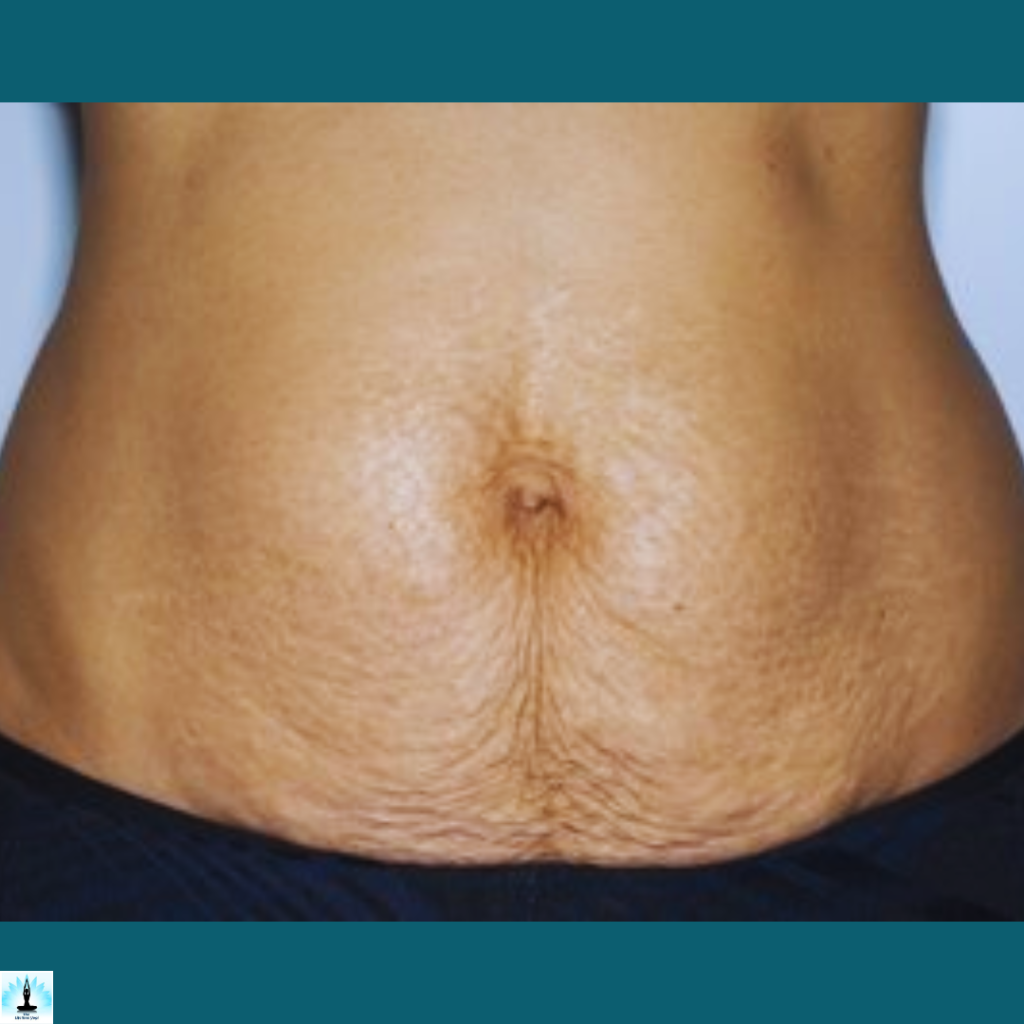
Stretch marks, medically known as striae gravidarum, are a common occurrence during pregnancy due to the rapid stretching of the skin as the body accommodates the growing baby. These marks often appear on the abdomen, thighs, hips, and breasts. While they are a natural part of the pregnancy journey, many women seek ways to reduce their visibility.
Why Stretch Marks Occur After Childbirth?
Stretch marks, also known as striae gravidarum, often appear after childbirth due to several physiological and hormonal changes that the body undergoes during pregnancy. These marks are a natural part of the pregnancy journey, but understanding why they occur can provide insights into how to manage and minimize their appearance. Here are the key factors contributing to the development of stretch marks after childbirth:
Rapid Weight Gain
During pregnancy, the body experiences rapid weight gain as the baby grows. This sudden expansion can cause the skin to stretch beyond its usual capacity, leading to the formation of stretch marks.
Hormonal Changes
Pregnancy triggers hormonal fluctuations, including increased levels of hormones like estrogen and progesterone. These hormones can affect the skin’s elasticity and collagen production, making it more susceptible to stretching.
Genetics
Genetic predisposition plays a significant role in the development of stretch marks. If your family members have a history of stretch marks, you may be more prone to developing them as well.
Collagen and Elastin
Collagen and elastin are proteins that provide structure and elasticity to the skin. Pregnancy-related hormonal changes can disrupt the balance of these proteins, making the skin less able to accommodate rapid stretching.
Stretching of Skin Layers
As the baby grows and the uterus expands, the skin’s underlying layers are stretched to accommodate the increased size. This stretching can cause the dermis (middle layer of skin) to tear, resulting in the formation of stretch marks on the surface.
Cortisol Levels
Stress and increased levels of cortisol, the body’s stress hormone, can contribute to the breakdown of collagen and elastin fibers in the skin. This can weaken the skin’s ability to handle stretching.
Lack of Hydration
Proper hydration is crucial for maintaining skin elasticity. Dehydrated skin is more prone to developing stretch marks, so staying well-hydrated during pregnancy is essential.
Multiple Pregnancies
Women who have had multiple pregnancies are more likely to develop stretch marks, as the skin has already been stretched and may be less elastic.
Age
The age at which a woman becomes pregnant can influence the development of stretch marks. Younger skin tends to have better elasticity and resilience, while older skin may be more prone to stretch mark formation.
Race and Ethnicity
Different skin types have varying degrees of elasticity. Women with lighter skin tones may have more noticeable stretch marks, while those with darker skin tones may have marks that are less visible.
Understanding these factors can help you make informed decisions about skincare during and after pregnancy. While it’s challenging to completely prevent stretch marks, maintaining a healthy lifestyle, staying hydrated, and using moisturizers can contribute to healthier and more resilient skin
Patterns Of Post-Pregnancy Stretch Marks
Post-pregnancy stretch marks typically appear in distinct patterns on various areas of the body. These patterns often reflect the natural expansion and stretching of the skin during pregnancy. Commonly affected areas include the abdomen, breasts, thighs, hips, and buttocks. On the abdomen, stretch marks can form in vertical or horizontal lines, resembling stripes, as the skin accommodates the growing uterus.

The breasts may develop stretch marks around the nipple area and extend towards the underarms. Thighs, hips, and buttocks can also show stretch marks in parallel lines, aligning with the body’s natural curves. The appearance of these marks can vary in color, initially presenting as red or purplish before gradually fading to a lighter hue.
The Importance of Consistency and Patience in Treating Stretch Marks
Consistency and patience are key virtues when it comes to effectively treating stretch marks. While it’s natural to desire quick results, it’s important to understand that addressing stretch marks requires a gradual and committed approach.
Consistency in skincare routines, including regular application of moisturizers and oils, can help improve skin elasticity and texture over time. Engaging in targeted exercises, such as yoga poses that promote circulation and skin health, should also be a consistent practice.
Patience is crucial throughout this process, as the skin’s natural regeneration and healing processes require time to work their magic. Embracing a patient mindset allows you to track your progress and celebrate small victories along the way. Remember, each person’s skin is unique, and results may vary.
Top Yoga Poses Can Help Reducing Post-Pregnancy Stretch Marks
Yoga offers a holistic approach to reducing the visibility of stretch marks and promoting skin healing. Incorporating specific yoga poses into your routine can enhance blood circulation, improve skin elasticity, and support overall skin health. Here are some of the top yoga poses to consider for minimizing stretch marks:
Trikonasana (Triangle Pose)
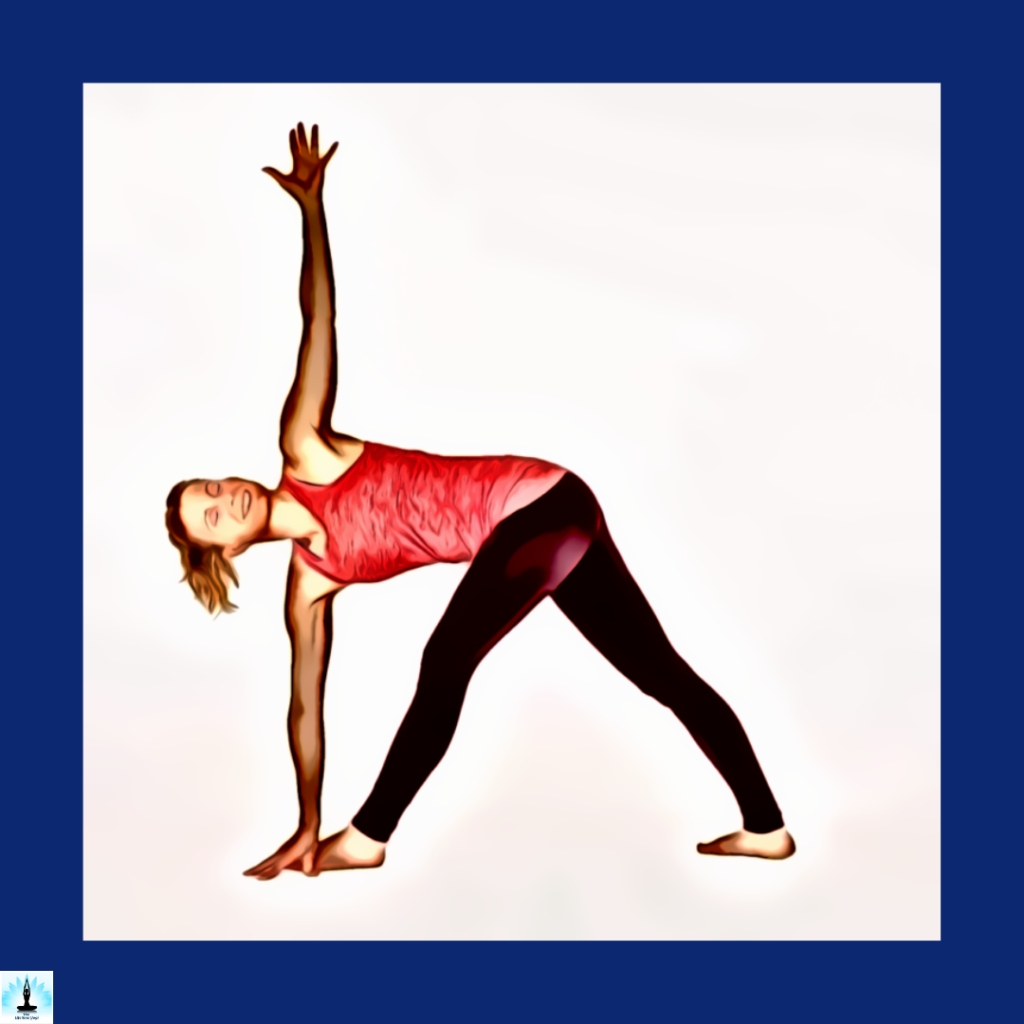
This standing pose involves a deep stretch of the sides of your torso, hips, and thighs. Trikonasana promotes blood flow to these areas, aiding in skin healing and rejuvenation.
Ustrasana (Camel Pose)
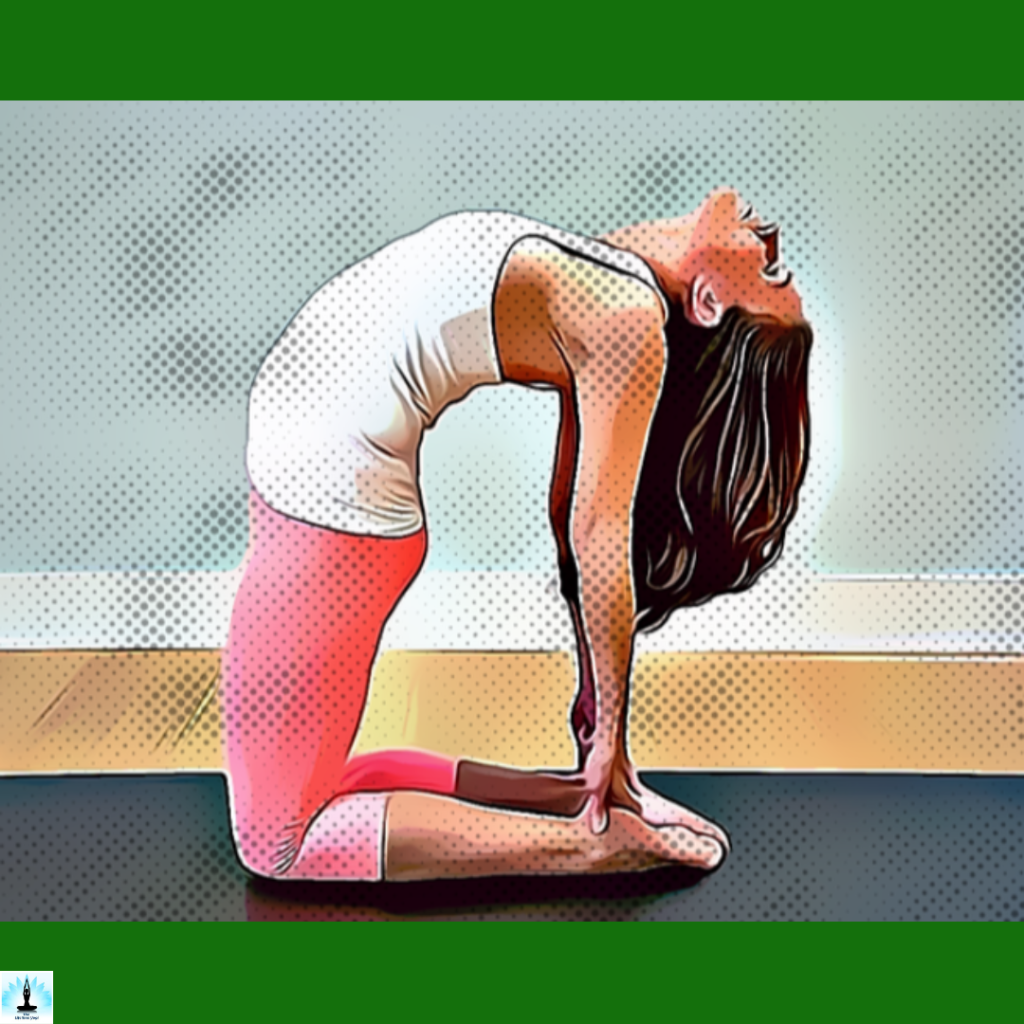
Ustrasana opens up the chest and abdomen while stretching the front of the body. This pose can contribute to maintaining skin suppleness and reducing the appearance of stretch marks.
Viparita Karani (Legs-Up-The-Wall Pose)

By elevating your legs against a wall, this restorative pose enhances blood circulation in the lower body. It helps reduce fluid retention and supports skin health, particularly on the legs.
Bhujangasana (Cobra Pose)
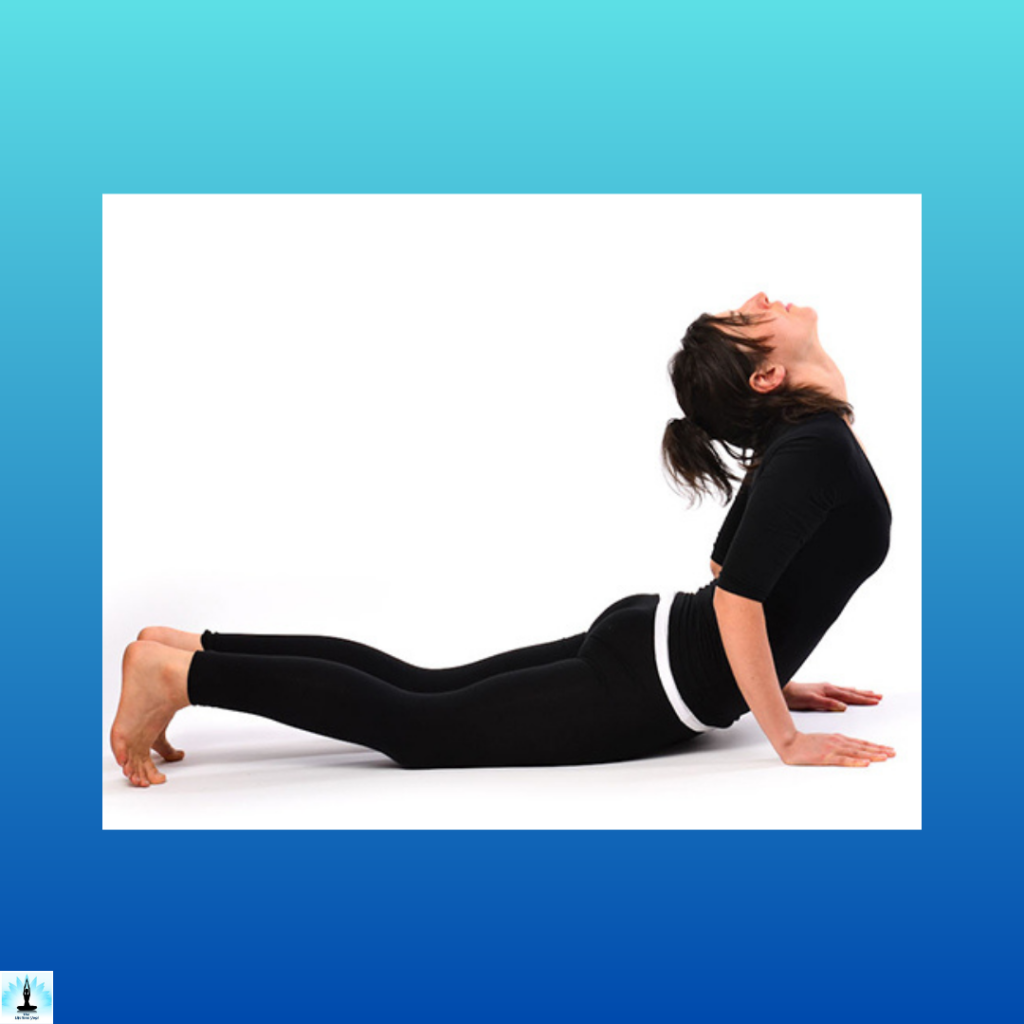
Cobra Pose involves gentle backbending, which promotes flexibility in the spine and stretches the abdomen. This pose can contribute to improved skin texture and tone.
Sarvangasana (Shoulder Stand Pose)
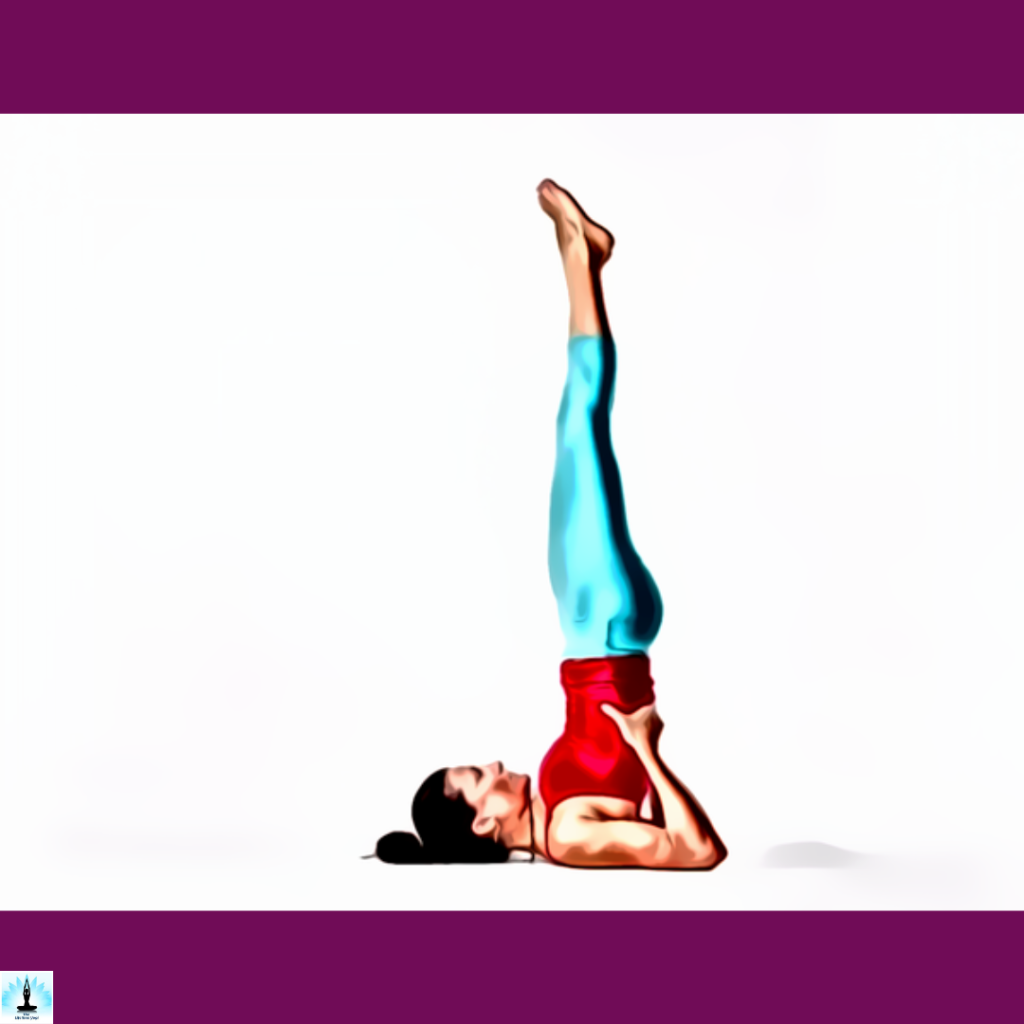
In this inversion pose, blood flow is directed towards the upper body, face, and neck. This increased circulation can aid in nourishing the skin and promoting healing.
Balasana (Child’s Pose)

Balasana encourages relaxation and can help reduce stress, which is beneficial for overall skin health. It also provides a gentle stretch to the lower back and hips.
Marjariasana (Cat-Cow Pose)

The flowing movement of Cat-Cow Pose massages the abdominal organs and promotes flexibility in the spine. This pose can indirectly contribute to healthier skin by supporting digestion and circulation.
Setu Bandhasana (Bridge Pose)
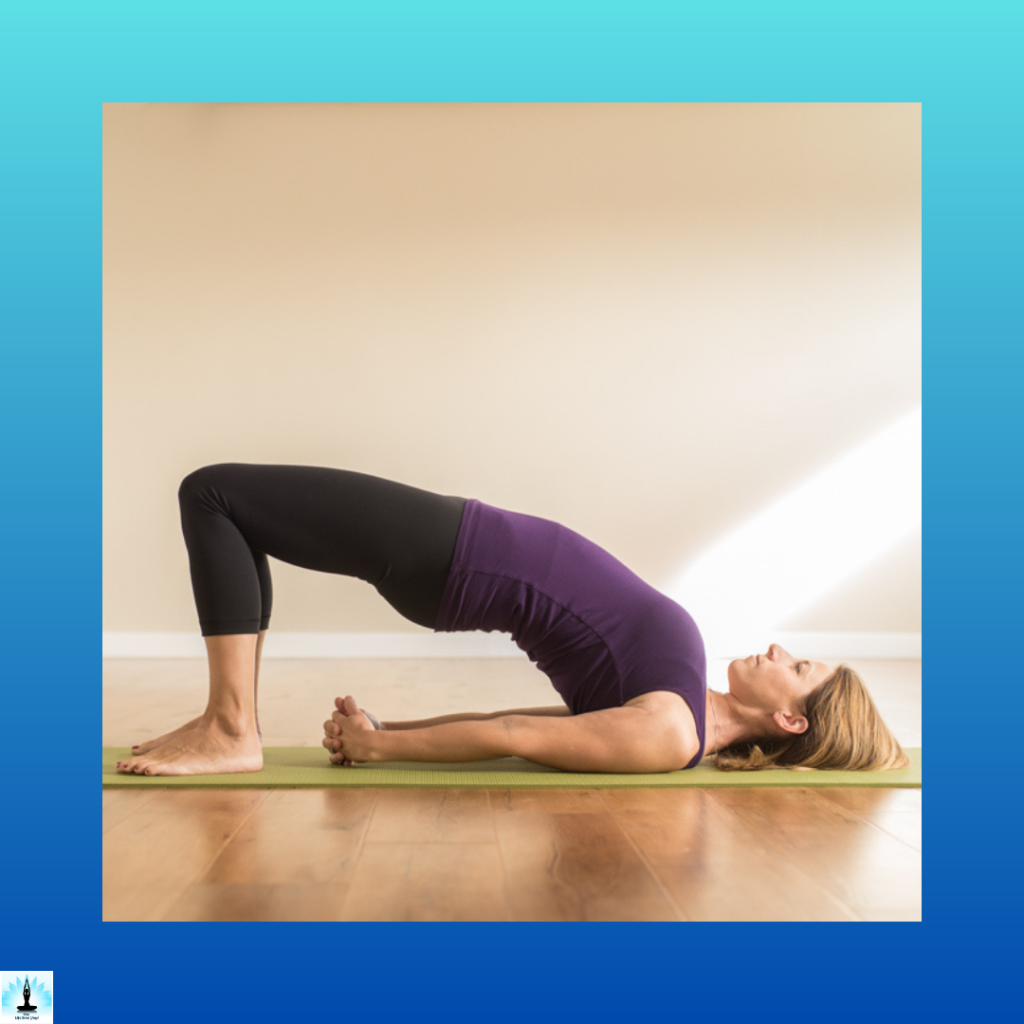
Bridge Pose involves lifting the hips, which stretches the chest and spine. This pose can aid in maintaining skin elasticity and promoting a more even skin tone.
The Role of Diet and Hydration in Enhancing Results from Yoga Practice
Diet and hydration play a vital role in enhancing the results obtained from your yoga practice, particularly when aiming to reduce the appearance of stretch marks and promote skin health.
A balanced and nutrient-rich diet provides the essential building blocks for skin regeneration and repair. Incorporate foods rich in vitamins A, C, and E, as well as antioxidants, to support collagen production and skin elasticity.
Hydration is equally important, as water helps flush out toxins and maintains skin hydration levels, leading to improved skin texture. Proper hydration also aids in optimizing blood circulation, allowing nutrients to reach the skin more effectively.
When practicing yoga, staying well-hydrated ensures that your body is prepared for movement and flexibility, enhancing the overall impact of your poses.
Diet Tips for Reducing Belly Stretch Marks After Pregnancy
- Hydration is Key: Drinking plenty of water throughout the day helps maintain skin hydration and elasticity, which can contribute to reducing the appearance of stretch marks.
- Include Protein-Rich Foods: Lean protein sources like poultry, fish, tofu, and legumes provide essential amino acids that support collagen production, aiding in skin repair and regeneration.
- Embrace Nutrient-Rich Foods: Incorporate a variety of fruits and vegetables rich in vitamins A, C, and E, such as carrots, sweet potatoes, citrus fruits, and leafy greens. These vitamins promote skin health and elasticity.
- Omega-3 Fatty Acids: Include foods like fatty fish (salmon, mackerel), flaxseeds, and walnuts, which are rich in omega-3 fatty acids. These healthy fats help maintain skin moisture and suppleness.
- Antioxidant-Rich Choices: Berries, dark chocolate, nuts, and green tea are excellent sources of antioxidants. Antioxidants help protect the skin from oxidative stress and support its healing process.
- Whole Grains: Opt for whole grains like quinoa, brown rice, and whole wheat bread, which provide fiber and B vitamins essential for skin health.
- Collagen-Boosting Foods: Citrus fruits, strawberries, bell peppers, and broccoli are high in vitamin C, which aids in collagen synthesis, crucial for skin elasticity.
- Healthy Fats: Avocado, olive oil, and nuts contain healthy fats that contribute to skin hydration and flexibility.
- Limit Processed Foods: Reduce intake of sugary and processed foods, as they can contribute to inflammation and negatively impact skin health.
- Stay Consistent: Consistently following a nutrient-rich diet supports the body’s natural healing processes over time, contributing to the reduction of belly stretch marks.
Yoga Tips and Precautions When Practicing Yoga Post-Pregnancy
Consult Your Healthcare Provider: Before resuming yoga post-pregnancy, consult your healthcare provider to ensure you have received the medical clearance needed to engage in physical activity.
Start Slowly:
Begin with gentle yoga poses and gradually progress to more advanced postures. Your body has undergone significant changes, so it’s important to listen to your body and avoid pushing yourself too hard.
Focus on Core and Pelvic Floor Strengthening:
Choose yoga poses that target core and pelvic floor muscles, as these areas are often affected during pregnancy. Engaging in poses like Cat-Cow and Pelvic Tilts can help strengthen and restore these muscles.
Modify As Needed:
Modify poses to accommodate any physical changes or discomfort you may experience post-pregnancy. Use props such as cushions and blocks for support and to avoid strain.
Avoid Overstretching:
Hormonal changes during pregnancy can lead to increased flexibility. While this can be advantageous, it’s crucial to avoid overstretching, as your joints may be more vulnerable. Practice controlled and mindful movements.
By adhering to these yoga tips and precautions, you can create a safe and effective post-pregnancy yoga practice that supports your body’s healing process and overall well-being.
Faqs on “Effective Ways How Yoga Can Help Reducing Post-Pregnancy Stretch Marks”
Q1: Can yoga really help reduce post-pregnancy stretch marks?
A1: Yes, yoga can contribute to reducing the appearance of stretch marks by improving blood circulation, promoting skin elasticity, and supporting overall skin health.
Q2: How soon can I start practicing yoga after giving birth?
A2: It’s recommended to wait until you receive clearance from your healthcare provider, usually around 6-8 weeks postpartum. Always consult a medical professional before resuming yoga.
Q3: Which yoga poses are most effective for reducing stretch marks?
A3: Yoga poses that target areas prone to stretch marks, such as Trikonasana, Ustrasana, and Viparita Karani, can be particularly beneficial. These poses enhance blood flow and encourage skin healing.
Q4: How frequently should I practice yoga to see results?
A4: Consistency is key. Aim for 2-3 times a week, gradually increasing the intensity and duration of your practice. Remember that results may vary and patience is important.
Q5: Can yoga help prevent stretch marks during pregnancy?
A5: While yoga cannot prevent stretch marks entirely, it can help maintain skin elasticity, which may reduce the severity of stretch marks. Proper hydration, skincare, and a balanced diet are also essential.
Q6: Are there any precautions I should take while practicing yoga post-pregnancy?
A6: Yes, start slowly, avoid overstretching, and focus on core and pelvic floor strengthening. Always consult your healthcare provider before starting any new exercise regimen.
Q7: Can yoga help with postpartum stress and anxiety as well?
A7: Absolutely. Yoga’s relaxation and mindfulness aspects can help alleviate postpartum stress and anxiety, promoting overall well-being.
Q8: Are there any specific breathing techniques that can enhance the benefits of yoga for reducing stretch marks?
A8: Yes, practicing deep, mindful breathing techniques such as Pranayama can enhance oxygen circulation and aid in skin healing.
Q9: How long will it take to see noticeable improvements in stretch marks through yoga?
A9: Results vary based on factors like genetics and consistency. Some individuals may notice improvements in a few weeks, while others may take longer. Stay patient and committed.
Q10: Can I combine yoga with other treatments for better results?
A10: Yes, you can complement your yoga practice with a balanced diet, proper hydration, and moisturizing creams to enhance the overall effectiveness of reducing post-pregnancy stretch marks. Always consult a dermatologist or healthcare provider for personalized advice.
Conclusion: Empower Your Post-Pregnancy Journey with Yoga and Say Goodbye to Belly Stretch Marks
Embracing motherhood is a remarkable journey that brings joy, love, and a beautiful transformation. As you navigate the post-pregnancy phase, it’s natural to seek ways to enhance your self-confidence and promote skin healing.
The gentle stretches and mindful movements not only aid in reducing the visibility of belly stretch marks but also contribute to a sense of relaxation and calm. By dedicating time to your practice and listening to your body’s needs, you empower yourself to take charge of your post-pregnancy journey.
References
https://www.ncbi.nlm.nih.gov/books/NBK436005/
https://www.ncbi.nlm.nih.gov/pmc/articles/PMC8957136/
https://www.ncbi.nlm.nih.gov/pmc/articles/PMC5782435/
https://www.ncbi.nlm.nih.gov/pmc/articles/PMC3424788/
https://www.ncbi.nlm.nih.gov/pmc/articles/PMC5440454/
https://www.ncbi.nlm.nih.gov/pmc/articles/PMC6615396/
